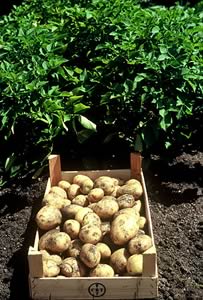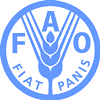 |
|||||||||
|
|||||||||||||||||||
|
|
Cusco
Potato Conference Looks to “Food of the Future” Meeting of scientists aims at honing strategies for more productive and sustainable potato-based systems.
With cereal prices soaring worldwide, an international conference opens in Cusco, Peru today on a crop that produces more food on less land than maize, wheat or rice. That crop, which some scientists are calling “the food of the future,” is the potato. Grown in more than 100 countries, potato is already an integral part of the global food system. It is the world’s number one non-grain food commodity and world production reached a record 320 million tonnes in 2007. Potato consumption is expanding strongly in developing countries, which now account for more than half of the global harvest and where the potato’s ease of cultivation and high energy content have made it a valuable cash crop for millions of farmers. The Cusco conference -- a flagship event of the United Nations International Year of the Potato, being celebrated in 2008 -- aims at tapping the potato’s potential to play an even stronger role in agriculture, the economy and food security, especially in the world’s poorest countries. Potato’s prospects are bright. In Peru itself, food price inflation has spurred government efforts to reduce costly wheat imports by encouraging people to eat bread that includes potato flour. In China, the world’s biggest potato producer (72 million tonnes in 2007), agriculture experts have proposed that potato become the major food crop on much of the country's arable land. However, say the conference sponsors, the International Potato Center (CIP) and FAO, extending the benefits of potato production depends on improvements in the quality of planting material, farming systems that make more sustainable use of natural resources, and potato varieties that have reduced water needs, greater resistance to pests and diseases, and resilience in the face of climate changes. During the four-day conference, more than 90 of the world’s leading authorities on the potato and on research-for-development will share insights and recent research results to develop strategies for increasing the productivity, profitability and sustainability of potato-based systems. They will address potato development challenges facing three distinct economic typologies -- identified in the World Bank’s World Development Report 2008 -- in developing countries. The first is agriculture-based economies, mainly in sub-Saharan Africa, where the poor are concentrated in rural areas and produce potato for home consumption first and then sale to local markets. CIP and FAO say a priority for these economies is research and technology sharing to support a “sustainable productivity revolution” and to link producers to domestic and regional commodity markets. Different strategies are needed for the “transforming economies” of Africa, Asia and the Middle East, where potato systems are characterized by very small, intensively managed commercial farms. A challenge for those countries is to sustainably manage intensive systems, increasing productivity while minimizing health and environmental risks. In the urbanized economies typical of Latin America, Central Asia and Eastern Europe, the challenge is to ensure the social and environmental sustainability of potato-based systems and to link small potato producers to the new food markets. On the third day of the conference, participants will visit a 12 000 hectare "Potato Park" near Cusco, where farmer-researchers have restored to production over 600 traditional Andean potato varieties, providing plant breeders with the genetic building blocks of future varieties. One of the expected outputs of the conference has been dubbed the “Cusco Challenge,” a year-long dialogue within the global potato science community that will address issues and opportunities in the future development of this essential crop.
|
||||||||||||||||||

|
|
||||||||||||||||||
| home | agri-services | pedigree
pen | news | dairy | beef | machinery property | organisations | site map |
|||||||||||||||||||


